Discover 11 hidden attractions, cool sights, and unusual things to do in Scunthorpe (United Kingdom). Don't miss out on these must-see attractions: Normanby Hall, The Trolleybus Museum at Sandtoft, and The Baths Hall. Also, be sure to include North Lincolnshire Museum in your itinerary.
Below, you can find the list of the most amazing places you should visit in Scunthorpe (England).
Table of Contents
Normanby Hall
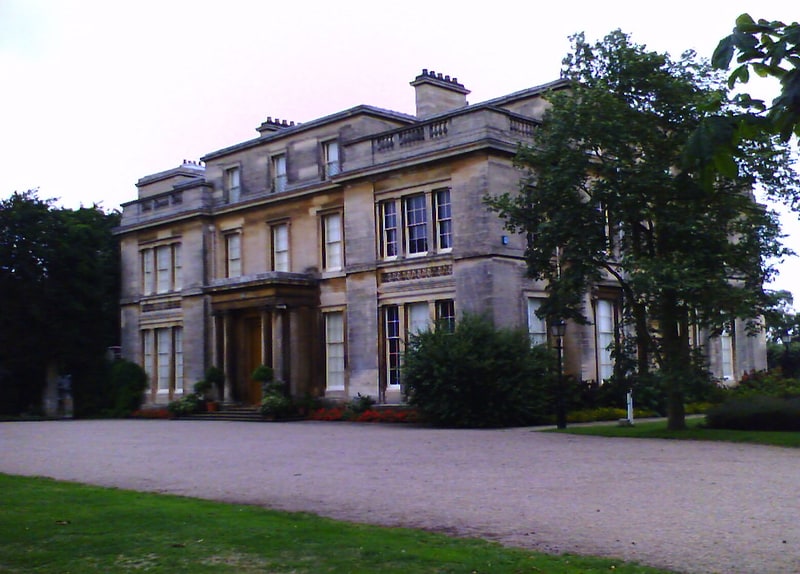
Mansion in Normanby, England. Normanby Hall is a classic English mansion, located near the village of Burton-upon-Stather, 5 miles north of Scunthorpe, North Lincolnshire.[1]
The Trolleybus Museum at Sandtoft
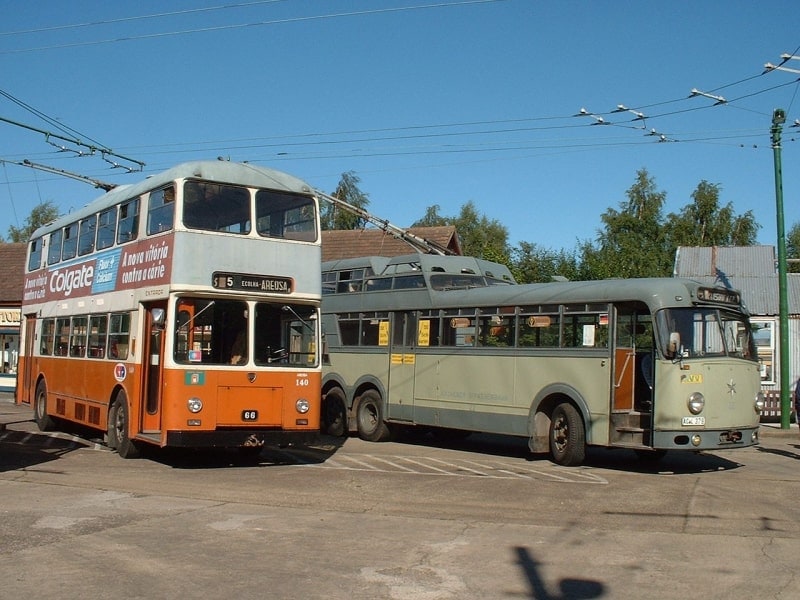
Museum in England. The Trolleybus Museum at Sandtoft is a transport museum which specialises in the preservation of trolleybuses. It is located by the village of Sandtoft, near Belton on the Isle of Axholme in the English county of Lincolnshire.[2]
Address: Belton Road, DN8 5SX Sandtoft
The Baths Hall

Event venue in Scunthorpe, England. The Baths Hall is an entertainment venue in Scunthorpe, North Lincolnshire, England. It hosts many types of entertainment, including live music, dance and comedy.[3]
Address: Doncaster Road, DN15 7RG Scunthorpe
North Lincolnshire Museum

Museum in Scunthorpe, England. North Lincolnshire Museum is a local museum in the town of Scunthorpe, north Lincolnshire, England.[4]
Address: Oswald Road, DN15 7BD Scunthorpe
Plowright Theatre
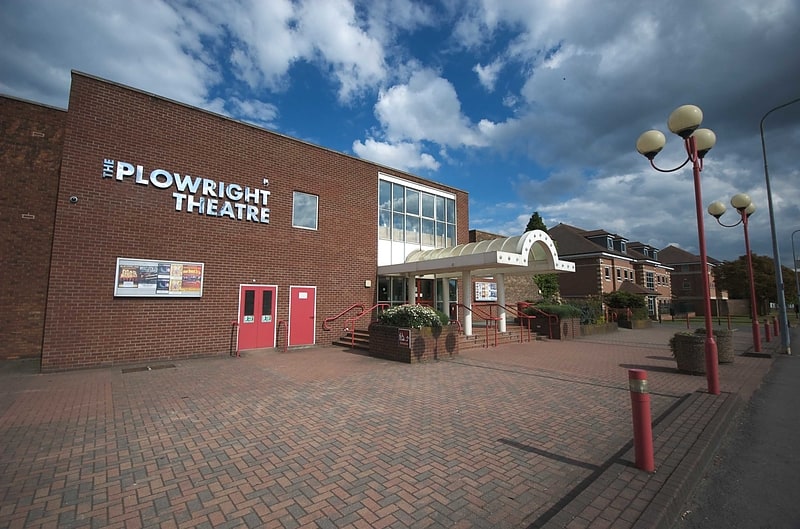
Theatre in Scunthorpe, England. The Plowright Theatre, is a live entertainment venue on Laneham Street in Scunthorpe, North Lincolnshire. It is owned and run by North Lincolnshire Council. It is the Sister Venue to the Baths Hall located on Doncaster Road in Scunthorpe.
The Plowright Theatre was commissioned by the former Scunthorpe Borough Council and built by J. W. Taylor in 1958. It is a traditional proscenium style theatre with a 354 seat auditorium. Originally known as Scunthorpe Civic Theatre it was renamed in the 1990s in recognition of the achievements of local actress Joan Plowright. Plowright was born in Brigg, educated in Scunthorpe, and is currently the President of Scunthorpe Little Theatre Club. The club was founded by her father, Bill Plowright, and staged the theatre's first performance, Peer Gynt, in 1958.[5]
Address: Laneham St, DN15 6JP Scunthorpe
Gainsthorpe
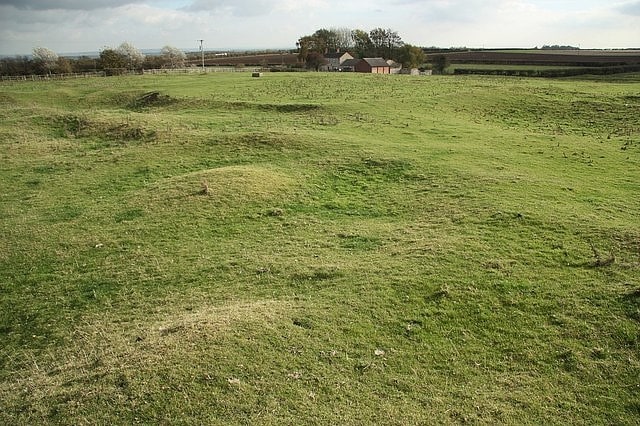
Gainsthorpe is a deserted medieval village site in a field which is part of the present Gainsthorpe Farm in Lincolnshire, England. The site is in Hibaldstow civil parish located on a minor road west of the A15 road, south of Hibaldstow and 5 miles south-west of Brigg.
It is now in the care of English Heritage. There is a small car park from where a footpath of about 220 yards (201 m) leads to the site. The typical medieval layout of sunken roads and raised rectangular tofts and crofts is clearly seen in the humps and hollows of the field.[6]
Brumby Hall
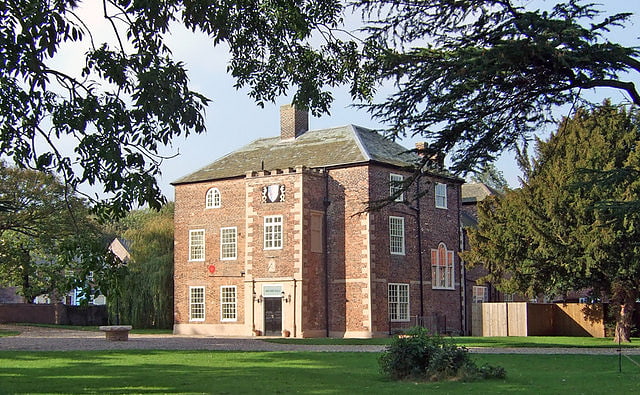
Brumby Hall is a late 17th-century residence and a Grade II* Listed building in Scunthorpe, North Lincolnshire.[7]
Julian's Bower
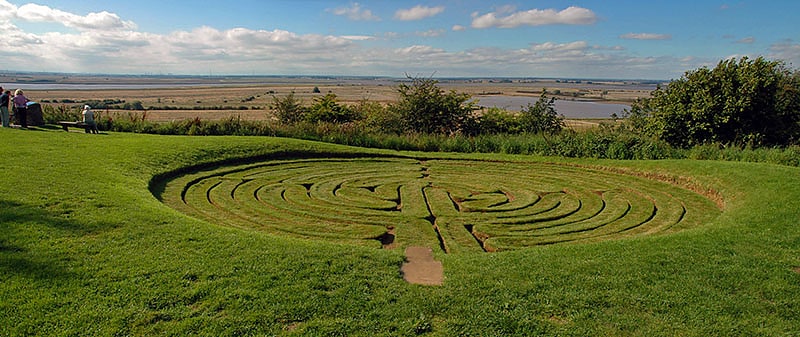
Historical landmark in Alkborough, England. Julian's Bower or Julian Bower is a name which was given to turf mazes in several different parts of England. Only one of this name still exists, at Alkborough in North Lincolnshire. It has also been known by corrupted forms of the name, such as "Gillian's Bore" and "Gilling Bore".
The 18th century antiquary William Stukeley mentions a "Julian Bower" turf maze at Horncastle, Lincolnshire, and in nearby Louth there was a "Gelyan Bower", which was mentioned in accounts of 1554.
At Goathland, North Yorkshire there was a "July Park" or "St Julian's" maze.
At Whinfell Forest there is a farm called Julian Bower, originally built to support the Keeper. It now lies outside the forest boundary.
Some English turf mazes are very similar in their layout to Scandinavian labyrinths, which usually have their paths marked with stones. At Grothornet, in Vartdal in the Sunnmore Province of Norway there is a stone-lined labyrinth called "Den Julianske Borg".
The name is believed to be derived from Julus, son of Aeneas of Troy, and the word place-name element burgh, meaning "a fortified place", "fort" or "castle". The reasoning behind this etymology is based on the fact that many mazes and labyrinths in Britain were called "Troy", "Troy Town" or "The Walls of Troy"; similar names, such as "Trojaburg", "Trojburg" or "Trelleborg", were used in Scandinavia. In popular legend, the walls of the city of Troy were constructed in such a complex and confusing way that any enemy who entered them would be unable to find his way out.
On a clear day, Emley Moor TV tower, the top of York Minster and the Kilburn White Horse can be seen from Julian's Bower.[8]
Address: Back Street, Scunthorpe
Atkinsons Warren
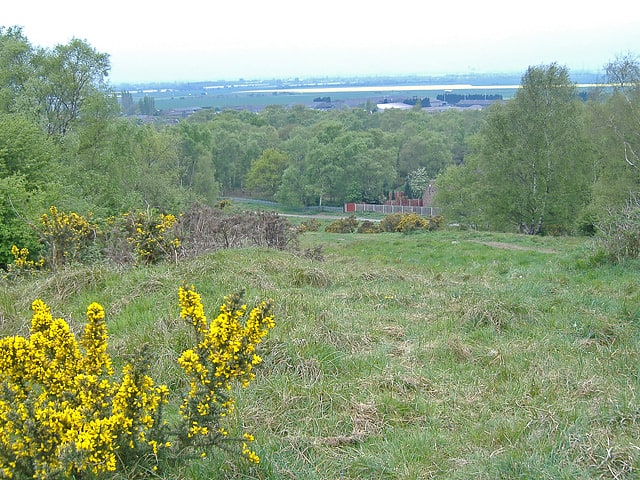
Nature preserve in Scunthorpe, England. Atkinsons Warren is a large area of woodland in northwest Scunthorpe, North Lincolnshire, England. It is a Local Nature Reserve, and includes a meadow grazed by rabbits, rough grassland, developing scrub, and birch and oak woodland. It also features tree carvings. The Warren can be publicly accessed on foot or by car, and is used for walking dogs and riding bicycles.
The name comes from Walter Atkinson, gamekeeper for the Sheffield family of Normanby Hall. Atkinson lived in the south shooting lodge of the Warren from 1905 to 1966. The ruins of Atkinson's home remain in the reserve to this day on a popular path for dogwalkers.
Over 33 Hectares of the Warren was declared a nature reserve on 28 July 2004, though a small error in draughting led to 0.08 Hectares being removed in 2008.[9]
Scunthorpe Steelworks
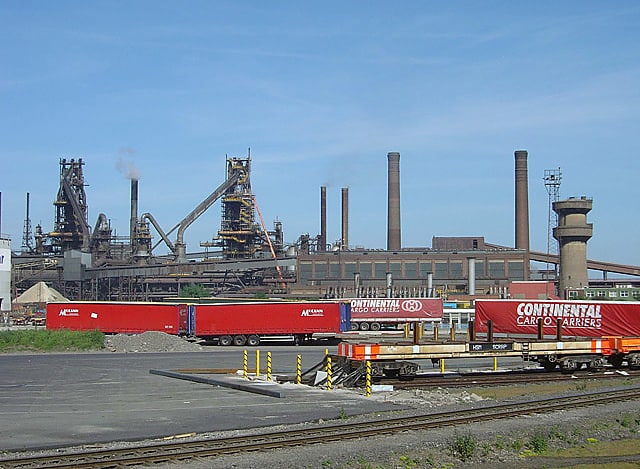
Iron and steel industry in Broughton, England. The Iron and Steel Industry in Scunthorpe was established in the mid 19th century, following the discovery and exploitation of middle Lias ironstone east of Scunthorpe, Lincolnshire, England.
Initially iron ore was exported to iron producers in South Yorkshire. Later, after the construction of the Trent, Ancholme and Grimsby Railway gave rail access to the area local iron production rapidly expanded using local ironstone and imported coal or coke. The local ore was relatively poor in iron and high in lime requiring co-smelting with more acidic silicious iron ores. The growth of industry in the area led to the development of the town of Scunthorpe in a formerly sparsely populated entirely agricultural area.
From the early 1910s to the 1930s the industry consolidated, with three main ownership concerns formed – the Appleby-Frodingham Steel Company, part of the United Steel Companies; the Redbourn Iron Works, part of Richard Thomas and Company of South Wales; and John Lysaght's Normanby works, part of Guest, Keen and Nettlefolds.
In 1967 all three works became part of the nationalised British Steel Corporation, leading to a period of further consolidation – from the 1970s the use of local or regional ironstone diminished, being replaced by imported ore via the Immingham Bulk Terminal – much of the steelworks was re-established with equipment at or south and east of the Appleby-Frodingam works during the late 1960s as part of the Anchor modernisation. Primary iron production was at four blast furnaces first established or expanded in the 1950s, and known as the four Queens: named Queen Anne, Bess, Victoria, and Mary.
Both the Normanby Park and the Redbourn works were closed by the early 1980s. Conversion to the Linz-Donawitz process of steel making from the open hearth process took place from the late 1960s onwards, with an intermediate oxygen utilising open hearth process known as the AJAX furnace operated in the interim – conversion to LD operation was complete by the 1990s.
Following privatisation in 1988, the company together with the rest of BSC became part of Corus, later Tata Steel Europe. In 2016 the long products division of Tata Steel Europe was sold to Greybull Capital with Scunthorpe as the primary steel production site.[10]
Ashby Community Centre Scunthorpe

Address: Everest Rd, Scunthorpe